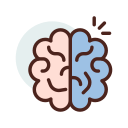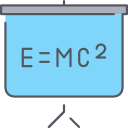Text
Associations between reading and mathematics :genetic, brain imaging, cognitive and educational perspectives
Converging evidence demonstrates a strong link between reading and mathematics: multiple cognitive processes are shared between reading and mathematics, including the representation and retrieval of symbolic information, attention, working memory, and cognitive control. Additionally, multiple brain networks are involved in both math and reading, and last, common genetic factors might influence both reading and math. Hence, it comes as no surprise that there are meaningful associations between (aspects of) math and reading abilities. Moreover, comorbidity rates between math learning disabilities (MD) and reading disabilities (RD) are high (up to 66%) and prevalence rate of the comorbid condition is reported to be more common than the prevalence rate of isolated math learning disabilities. Accordingly, the goal of the research topic is to explore the underline mechanisms of this overlap between reading and math. The research topic aims to include the following topics: • Genetics - it has been found that both RD and MD are based on genetic factors and run in families. Moreover, math problem solving shares significant genetic overlap with general cognitive ability and reading decoding, whereas math fluency shares significant genetic overlap with reading fluency and general cognitive ability. Hence, this topic will explore the shared and unique genetic risk factors to RD and MD, In addition to shared and unique genetic influence on reading and math. • Neural perspective - converging evidence from both structural and multiple functional imaging studies, involving a wide range of numerical tasks, points to the intraparietal sulcus (IPS) as a core region that involve in quantity manipulation. However, several additional brain areas, such as frontoparietal and temporoparietal areas were found to be involved in numerical tasks. Individuals with MD show deficits in a distributed, set of brain regions that include the IPS, fusiform gyrus in posterior brain regions and pre frontal cortex regions. Similarly, converging evidence indicate that the left hemisphere regions centered in the fusiform gyrus, temporoparietal cortex, and pre frontal cortex regions are strongly involve in typical reading and present lower activity, connectivity or abnormal structure in RD. Thus, there is a meaningful neural overlap between reading and math. Hence, the authors can submit empirical studies on the role of several of brain regions that are involved in math and reading (commonality and diversity) both in the typical and a-typical development. • Cognitive factors that play role in mathematics and reading, and comorbidity between RD and MD - There is a long lasting debate whether MD and RD originate from unique cognitive mechanisms or not. Multiple cognitive processes are shared between reading and mathematics. Therefore, impairments in any one of domain-general skills could conceivably play an important role in both pure and comorbid conditions. Moreover, it has been suggested that phonological processing has a significant role in some aspects of numerical processing such as retrieval of arithmetical facts. • Education - it will be interesting to look at the effect of interventions that aim to improve reading (such as phonological awareness) and there transfer effect on improving mathematical processing. Alternatively, it will be good to test whether math interventions will improve reading.
Availability
No copy data
Detail Information
- Series Title
-
-
- Call Number
-
370.1523 ASS a
- Publisher
- : Frontiers Media SA., 2017
- Collation
-
113p. : ill.
- Language
-
English
- ISBN/ISSN
-
9782889452651
- Classification
-
370.1523
- Content Type
-
-
- Media Type
-
-
- Carrier Type
-
-
- Edition
-
-
- Subject(s)
- Specific Detail Info
-
-
- Statement of Responsibility
-
-
Other version/related
No other version available
File Attachment
Comments
You must be logged in to post a comment

 Computer Science, Information & General Works
Computer Science, Information & General Works  Philosophy & Psychology
Philosophy & Psychology  Religion
Religion  Social Sciences
Social Sciences  Language
Language  Pure Science
Pure Science  Applied Sciences
Applied Sciences  Art & Recreation
Art & Recreation  Literature
Literature  History & Geography
History & Geography